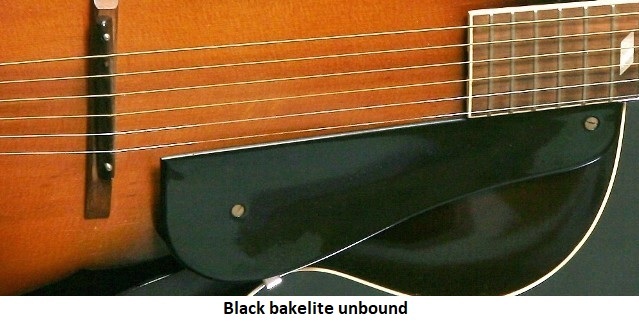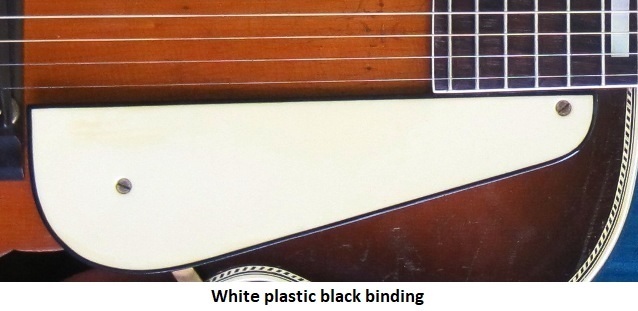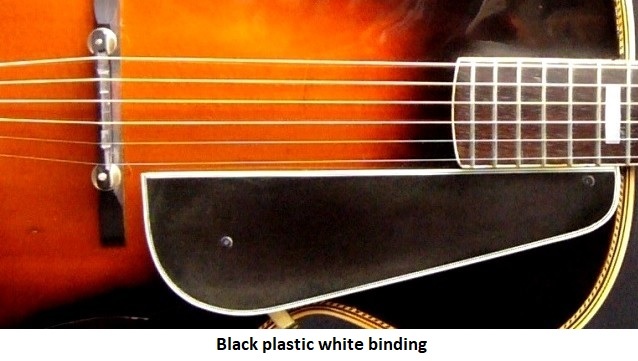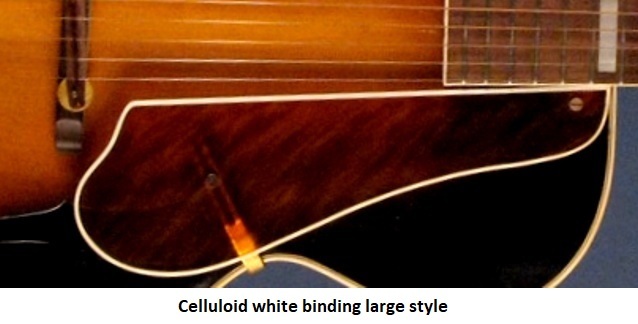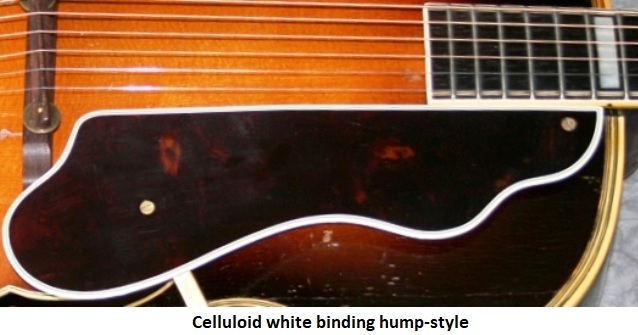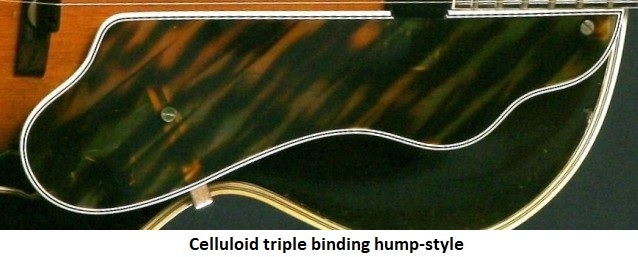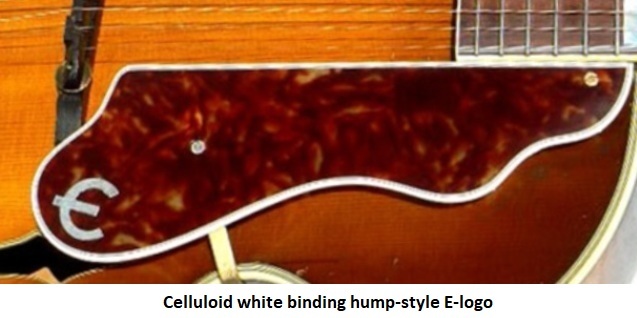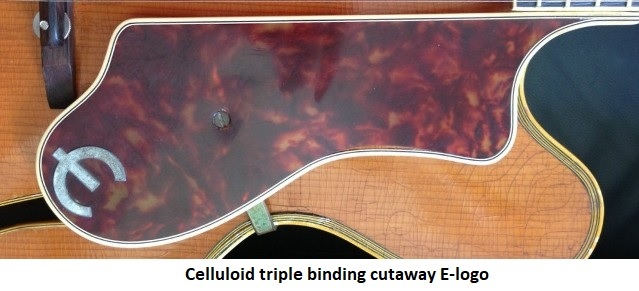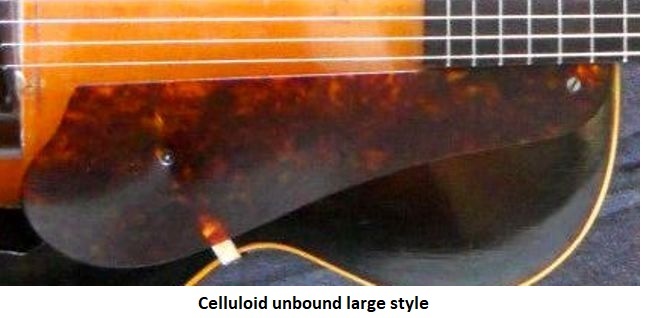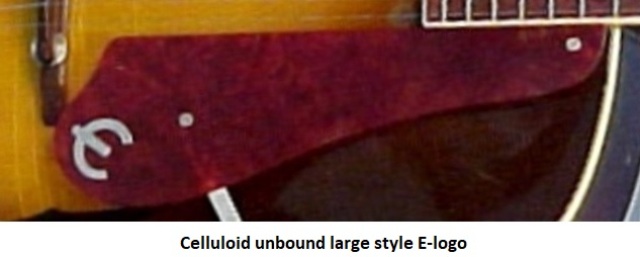Epiphone used over the years eight different floating pickguards for their achtop guitars. Black bakelite was used on all pre-1934 instruments. (for early Epiphone pickguards see Wiedler close-up 38) In 1934 De Luxe featured a white plastic pickguard with black binding, while the Broadway and Tudor had black guards with white binding. Black bakelite was used on the lower-end guitars through 1939.
From 1935 bound tortoise celluloid pickguards were used on the upper level instruments and the shape of the pickguards became larger with the advent of larger guitar bodies. The simple curve now swooped down past the bridge. The Emperor and the De Luxe included an extra, elegant “hump” on the upper edge. Cutaway instruments used the same “humped” design trimmed to follow the curve of the cutaway.
In the 1940s and 1950s tortoise celluloid replaced the bakelite pickguard on the lower-end guitars. Pickguards from the late 1940s through the 1950s were dressed up a bit by the addition of the Epiphone “E” on the lower edge.
NOTE: Epiphone guaranteed “All models for the life of the instrument” (cat. 1932), but “metal and other parts that recieve wear, excepted” (cat. 1934) since they don’t last such a long period. So many of the historic guitars are most likely not equipped with their original pickguards anymore. Therefore, the pictures below only show types of pickguards Epiphone used over the years. They don’t necessarily show whether they originaly belong to the instrument they are on.
References :
Felix Wiedler, NY Epi Reg
Jim Fisch & L.B. Fred, The House of Stathopoulo, 1996, p. 74
